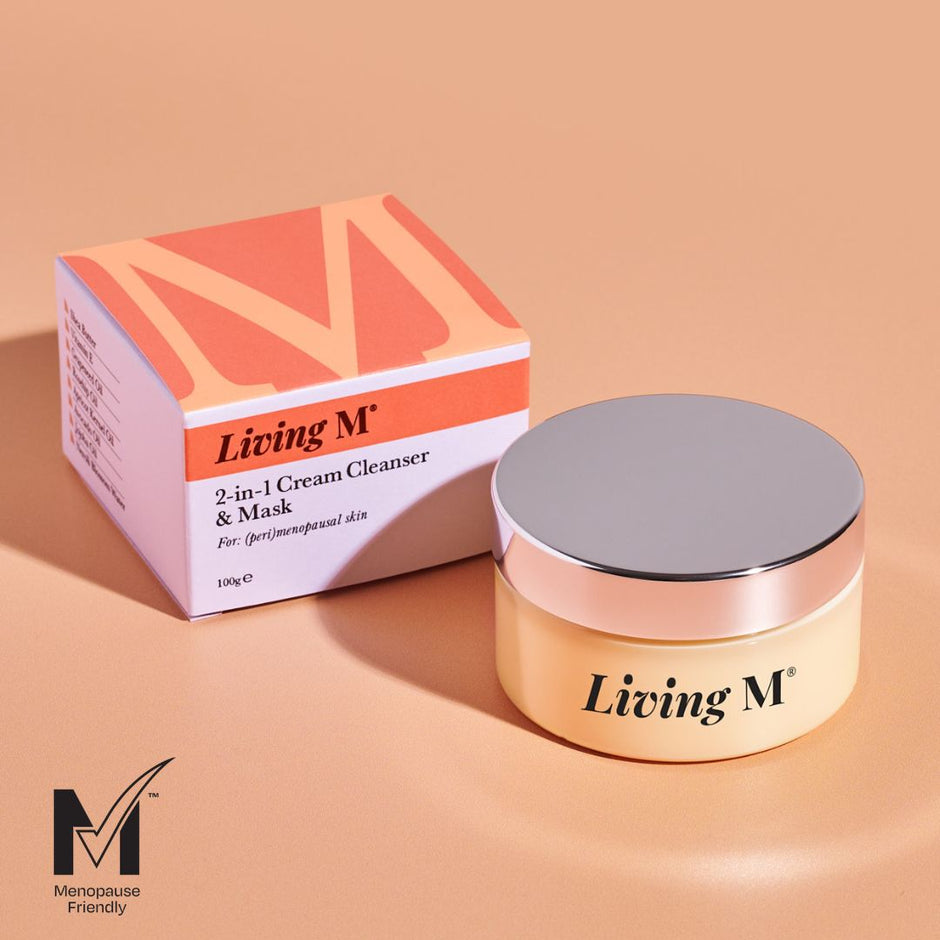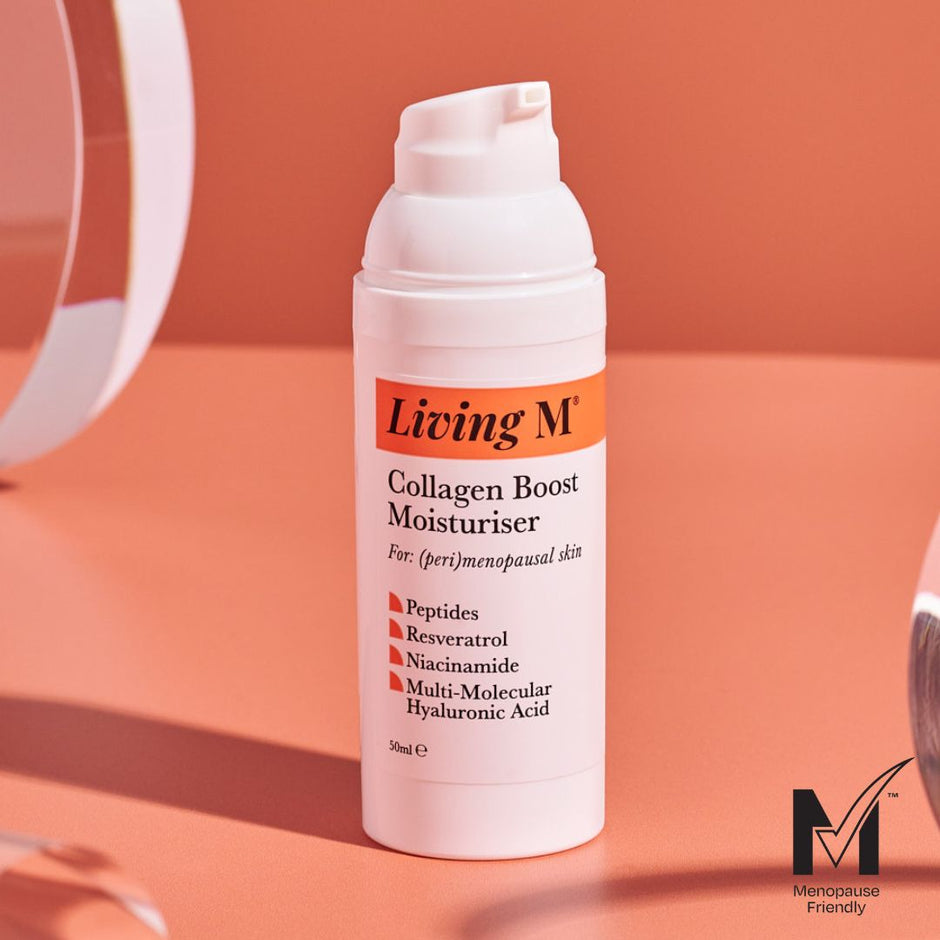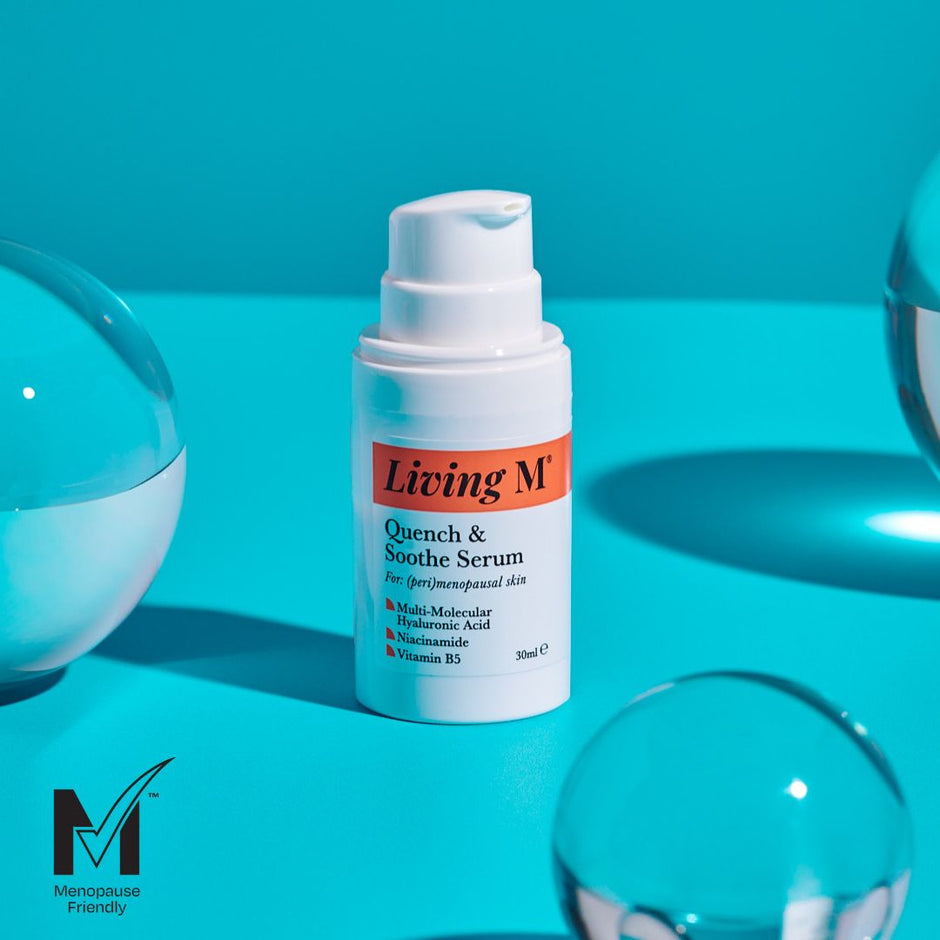Abigail James, is an award winning aesthetician, skincare and well being expert. Here she shares her expert view on how menopause affects our skin.
Lots of guides and advice around menopause and skin tend to be aimed at women in their fifties and sixties, however the truth is we often see signs of the menopause in our skin much earlier in our forties and even late thirties. This comes as an unwelcome surprise to many women, who are suddenly dealing with signs of ageing and unpleasant changes to their skin unexpectedly.
What happens to our skin in menopause?
One thing to be clear on about menopause is that it affects the health and appearance of our skin in multiple different ways and can be quite unique to each person.
As peri-menopause and menopause occurs, our hormone levels begin to fluctuate wildly. This has a knock-on effect on our skin, which starts to show signs of the internal turmoil within. You might experience breakouts and acne for the first time in over a decade – or develop conditions such as eczema and rosacea. Skin also starts to show its age – we begin to see more visible lines as wrinkles deepen and skin starts to sag as it loses elasticity.
Many of these symptoms and conditions are caused by hormonal changes, as well as natural reduction in collagen production, a reduction in cell turnover and skin thickness.
During menopause, dropping oestrogen levels mean our bodies also start to dry out, which extends to our skin. Many women report feeling skin has lost its plumpness and vitality – it feels tight, sensitive and much more prone to dryness. Oestrogen levels have a huge impact on the moisture levels within our skin, so excess dryness is probably the most common skin change which continues beyond the menopause.
What can I do to support my skin during menopause?
Navigating the wealth of advice and product recommendations for menopausal skin can feel overwhelming – so start by taking simple baby steps which will help you to feel better straight away without giving in to confusion or spending lots of money on lotions and potions without a clue what they do, or whether they’re good for you. Firstly – review your skincare routine. I can’t stress this enough. As your body changes, your skincare routine may need to change too (or you’ll need to introduce one, if you haven’t already!) Focus on getting the basics right and introduce nourishing, hydrating ingredients into your regime – think hyaluronic acid, ceramides and squalenes. Your skin might not need a thick rich cream if you are prone to spots, so think hydration without the heavy texture. Avoid overusing acids and peels that can strip the skin; I love acids and peels. They can be quite skin changing for the better, but you may have been able to get away with being more ruthless and slap dash in your twenties and thirties with these types of ingredients, now is the time for more of a combined approach; with more hydrating skincare in conjunction with the power packing actives. Take advice and treatments from a well trained professional when it comes to peels. Collagen-stimulating products are also a must to combat loss of firmness and fine lines – so adding peptides and retinoids to your regime is also a huge support. It’s also important to concentrate on skin health from the inside out, which starts with good gut health, balanced nutrition and hydration. Consider taking collagen supplements or formulas specifically designed to support your skin from within alongside your topical skincare regime. actives. Take advice and treatments from a well trained professional when it comes to peels. Collagen-stimulating products are also a must to combat loss of firmness and fine lines – so adding peptides and retinoids to your regime is also a huge support.
Are there any treatments suitable for menopausal skin?
Yes! With some clients we can do loads to their skin because there are so many factors in play which can have such a hugely positive impact, from a variety of technologies to specific peels, infusions and other methods, which can be combined in treatments or staggered alongside each other as part of a skin maintenance program. taking an individualised approach is always essential when it comes to skin treatments of any kind. Some of the technology I recommend for menopausal skin that needs lift, tone and contour include:
*HIFU: HIFU stands for High-Intensity Focused Ultrasound. It’s a non-invasive, non-surgical and painless treatment which has similar effects to a facelift – stimulating cells to produce more collagen to improve skin structure and elasticity. Pricier, but the results are well worth it.
*Radiofrequency: RF treatment uses low-energy radiation waves to heat cells within the deepest layers of the skin, stimulating collagen production. This treatment is wonderful for tightening the skin and reducing the appearance of fine lines and wrinkles. This has been core to some of my signature facials for a number of years.
This is an extract from 'Peri-Meno-What? - Guide to Perimenopause' Click here for free download.
**This article is a paid partnership by Abigail James with Living M Skincare.




